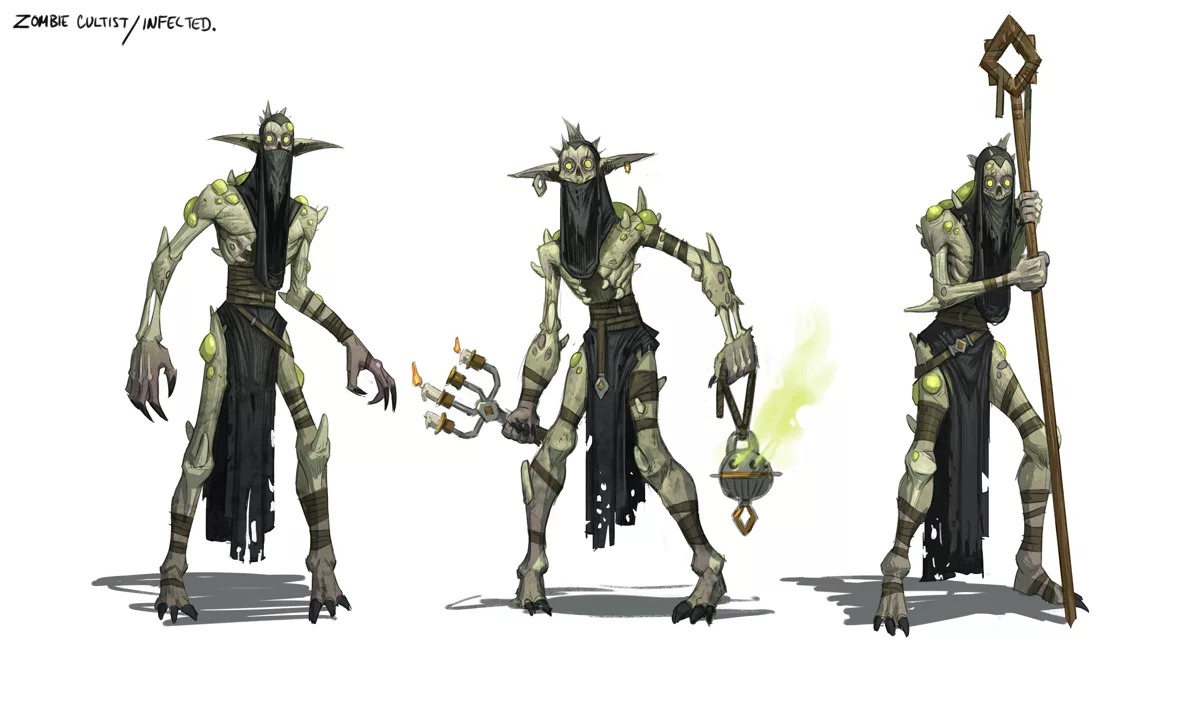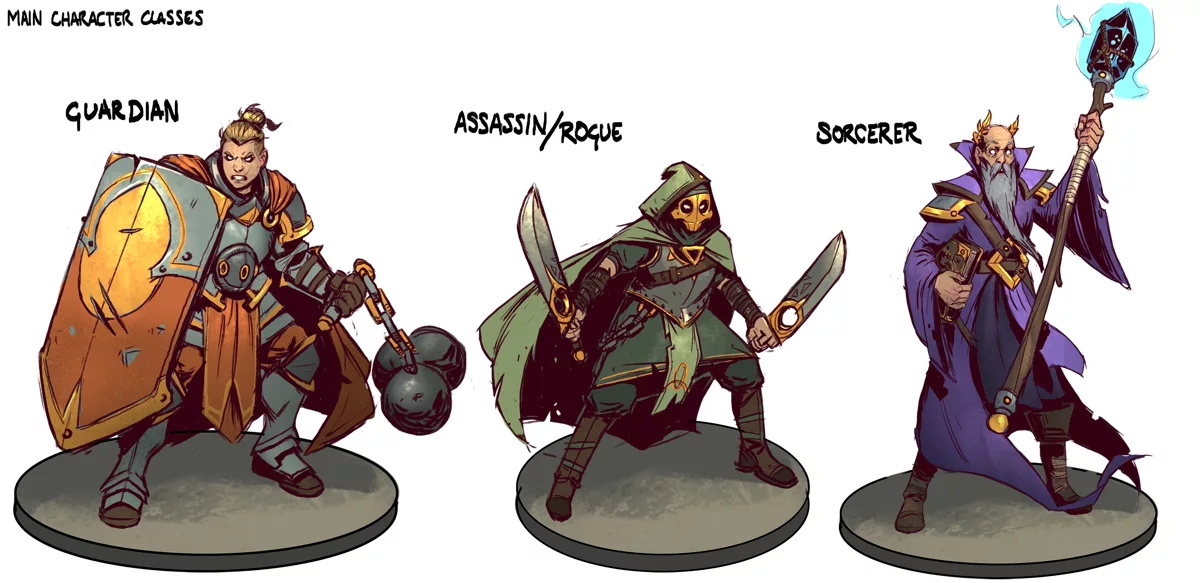From Sketching to Rendering - A Look at How Concept Artists Work at Resolution Games
Hi there! My name is Rustan and I am Resolutions Concept Art Line Manager. I’ve been with the company since 2015 and I’m currently working on a new, exciting IP. At Resolution we take a lot of pride in creating beautiful and immersive art for our games, and I thought it might be interesting to broadly describe how we work as concept artists.
The start of an idea
Working with concept art in games often gives you a couple of boxes to tick - a creature that is supposed to be a big physical danger to the player in some way, an environment that is supposed to elicit some sort of feeling of magic or dread, or a protagonist that should feel strong and brave. The first step for most artists out there would be to start gathering inspiration and references. If you are working without constraints, or with what is usually called blue skies, this step is even more important as it will help you form an idea of what you want to create. Often, projects will have an art-bible that is meant to help guide artists in the direction the team or art director wants the project to head visually. So it’s important to gather inspiration and reference consistent with the art-bible, if the project has one set-up already.
Sometimes we use applications such as Miro to set up joint mood and reference boards, which is really helpful to create a unified vision for the project's visuals.
Sketches and options
Next, we start sketching and roughing out options for whatever we are designing. The idea here is to work quickly and loose and not get bogged down in details at this point. You want to create as many options to look at as possible. Usually I find that my initial ideas are not as good as my tenth or even one hundredth iteration. You can sketch with lineart, artistic roughs, photobashes or whatever process suits you and the project, the objective here is to create images with a clear intention and idea.
At the end of this process we usually sit down with our art director and go through the sketches to see what fits the game best. Often we can see that taking different elements of different designs and putting them together might create new and exciting results. Ultimately we want to put as much work as we can into exploring here, so that we can confidently make a decision on which direction we want to take with the design.
Flesh out, tweaks and options
After we have found a good base design for the brief, we take the sketch and start to flesh it out. Adding details, clarifying and reinforcing the design wherever possible. Creating options for parts of the design and tweaking weaker parts to end up with a concept that can be shown to the team at large. We want to strengthen the original idea and expand upon it as much as possible. Color and mood is really important here, whether you are creating a concept for a small imp or an entire environment. The concept we end up with here is going to be used to make a decision on what we want to put in the game ultimately.
Render and callouts
When the decision has been made about which design fits the game best, all that remains is rendering it out to a level where a 3D artist can take the concept and model it with accuracy. Sometimes you might not have to render every little detail out, the feeling of the previous sketch might be enough for the task. But sometimes it’s important to be as detailed as possible about which materials are used and how the different parts may connect to each other. We do what is called “turn-arounds” which is basically the different angles of the design, so the 3D artist doesn’t have to guess what may be behind obscured parts of the concepts. This step can take a lot of time, but is usually very helpful as it is easier to get exactly the result you want in the end.
In conclusion
Being a Concept Artist is a lot of fun. I’ve worked on a lot of projects since starting at Resolution but Bait! will always hold a special spot in my heart because it was the first project I worked on. Working here has made it possible for me to work with a number of different art styles and subject matters, which is great because it forces me out of my comfort zone. You’ll never know what may come next!
If you’re interested in becoming a Concept Artist, the portfolios that always stick out to me are the ones where you can clearly see that the artist has an unhindered enthusiasm and passion for what they are drawing or painting. This is just my very subjective opinion, but artists shouldn't focus too much on what they think different companies want to see, but rather really lean into the things that they like and are passionate about. That being said, venturing out of your comfort zone is very important, since we tend to hire artists that have an ability to take on almost any task and inject it with creativity.
The best piece of advice I've ever been given is to experiment as much as you can and not worry too much about the results, and secondly to be open to feedback. If you can do those things, you are almost guaranteed to one day have a body of fantastic work in your portfolio.
If you’re looking to take the next step in your game art career, Resolution Games are hiring! See some of our current openings below:




